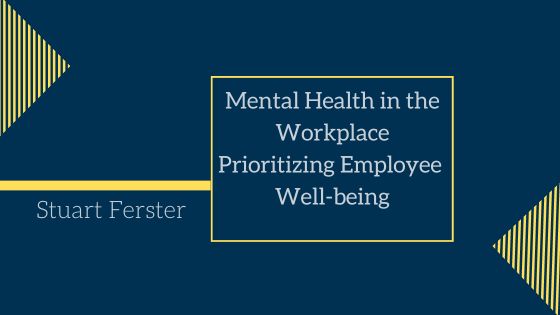In the modern workplace, recognizing and prioritizing mental health is not just a compassionate gesture; it’s a strategic imperative. As organizations evolve, so does our understanding of the complex interplay between work, stress, and mental well-being. This article delves into the importance of prioritizing mental health in the workplace and strategies to create a supportive environment for employee well-being.
The workplace landscape has transformed significantly in recent years, emphasizing the need to acknowledge and address mental health concerns among employees. The understanding that mental well-being is integral to overall health has led organizations to prioritize creating environments that foster positive mental health. Let’s explore why this shift is crucial and how organizations can actively contribute to the mental well-being of their employees.
- Acknowledging the Impact of Work on Mental Health: Long gone are the days when work and mental health were treated as separate entities. The modern workforce recognizes that the demands of the workplace can significantly influence mental well-being. Acknowledging this connection is the first step toward building a workplace culture that prioritizes employee mental health.
- Reducing Stigma and Encouraging Open Conversations: One of the primary barriers to addressing mental health in the workplace is the stigma associated with it. Organizations need to cultivate a culture where open conversations about mental health are not just accepted but encouraged. Creating an environment free of judgment enables employees to seek support when needed without fear of repercussions.
- Implementing Mental Health Training for Managers: Managers play a crucial role in influencing workplace culture and employee experiences. Providing mental health training for managers equips them with the skills to recognize signs of distress, offer support, and navigate conversations about mental health. This training fosters a more empathetic leadership approach.
- Flexible Work Arrangements and Work-Life Balance: Balancing work and personal life is fundamental to mental well-being. Offering flexible work arrangements, such as remote work or flexible hours, provides employees with the autonomy to manage their responsibilities effectively. Striking a healthy work-life balance reduces stress and contributes to a positive mental state.
- Employee Assistance Programs (EAPs): Employee Assistance Programs are valuable resources that organizations can offer to support their employees’ mental health. EAPs typically provide counseling services, mental health resources, and assistance with various life challenges. Ensuring that employees are aware of and comfortable using these programs is essential.
- Promoting Physical Well-being for Mental Health: Physical and mental well-being are interconnected. Encouraging physical activities, offering gym memberships, or organizing wellness programs contributes not only to physical health but also positively impacts mental health by reducing stress and improving mood.
- Establishing Clear Communication Channels: Creating open and accessible communication channels for employees to express their concerns or seek help is crucial. This includes regular check-ins, anonymous feedback options, and clear guidelines on how employees can voice their mental health needs without fear of reprisal.
- Setting Realistic Expectations and Goals: Unrealistic work expectations and goals can lead to stress and burnout. Organizations must set realistic targets and communicate expectations transparently. This helps in managing work-related stress and ensures that employees feel supported rather than overwhelmed.
- Fostering a Supportive Team Culture: The relationships among team members significantly influence the overall work environment. Fostering a supportive team culture involves promoting collaboration, empathy, and mutual respect. When employees feel connected and supported by their colleagues, it positively impacts their mental well-being.
- Offering Mental Health Days and Leave Policies: Recognizing the need for mental health days or leave policies is a critical aspect of prioritizing employee well-being. Employees should feel comfortable taking time off when needed to address their mental health without fearing negative consequences.
- Addressing Workplace Bullying and Harassment: A toxic work environment characterized by bullying or harassment can have severe implications for mental health. Organizations must have stringent policies in place to address workplace misconduct promptly. Creating a safe and respectful workplace is foundational for supporting mental well-being.
- Regularly Assessing and Adapting Workplace Policies: The workplace is dynamic, and so are the challenges employees face. Regularly assessing and adapting workplace policies based on employee feedback, changing industry trends, and the evolving understanding of mental health ensures that organizations remain proactive in supporting their workforce.
- Celebrating Successes and Milestones: Recognizing and celebrating both personal and professional successes contributes to a positive work culture. Acknowledging achievements and milestones fosters a sense of accomplishment and boosts morale, positively impacting employee mental well-being.
Prioritizing mental health in the workplace is not just an ethical responsibility; it’s a strategic investment in the success of both employees and the organization. By implementing these strategies, organizations can create environments that not only support mental well-being but also foster a culture of empathy, collaboration, and overall employee satisfaction.

